There are numerous legends surrounding the arrival of the Jews in Spain. They were propagated by Jewish and Christian chroniclers, especially in the sixteenth century. Some say they came in the time of King Solomon, following in the wake of the Phoenician sailors; others that the event was one consequence of their exile from Judaea, as ordered by Nebuchadrezzar.
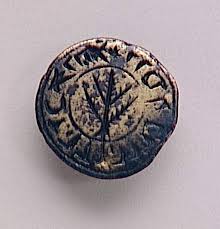
Historians, for their part, specify that the first Jews came here in a relatively organised way after the destruction of the Temple in Jerusalem, in 70 C.E. They settled first on the Mediterranean coast, then spread throughout most of the Iberian Peninsula. The oldest physical evidence of the Jewish presence in Spain is a trilingual inscription (in Hebrew, Latin, and Greek) on a child’s sarcophagus found in Tarragona and dating from the Roman Empire (now displayed at the Sephardic Museum in Toledo). Further, there is no doubt that the mosaic at Elche (first century) originally decorated the floor of a synagogue. This is attested by the Greek inscriptions and the nature of its geometrical drawings. Finally, texts reveal a Jewish presence in Spain during the same period: examples are The War of the Jews by Flavius Josephus (VII, 3, 3) and the Mishna (Baba Batra, III, 2).
Sepharad: Jewish Spain
The term “Sepharad” appears in the Bible (Obadiah 20, King James version): “And the captivity of this host of the children of Israel shall possess that of the Canaanites, even unto Zarephath; and the captivity of Jerusalem, which is in Sepharad, shall possess the cities of the south”. Since the eighth century, “Sepharad” has traditionally referred to Spain and the Spanish Jews, and, by extension, has been applied to all the Jews in the communities around the Medeiterranean.
Little is known of the Spanish-Jewish communities before the eighth century. Under the Romans, the Jews had the same status as elsewhere is the empire. Under the reign of the Visigoth kings, who were Aryans, the Jews were tolerated and many lived from farming. From 586, when King Recaredo converted to Christianity, the Jews endured nearly a century of persecutions and forced conversions (making them the ancestors of the Marranos). King Egica even considered making them slaves.
When the Arabs came in 711, the Jews cooperated with them. The Arabs were few in number and in need of faithful allies. It was in the interest of both communities to get along, especially since large numbers of Jews from the Maghreb soon swelled the ranks of the Moors and the Jews of the Sepharad. The importance of the Jewish minority is reflected in the appellation “Jewish cities” some Arab geographers gave to Granada, Tarragona, and Lucena. The development of urban life called for shopkeepers and administrators, functions Arabs and Berbers were loath to take on.
The institution of the caliphate of Córdoba in 926 ushered in a golden age for Judaism in the Islamic lands. Abderrahman III (912-971) took as his doctor Hasday ibn Saprut, a Jews from Jaén, entrusting him not inly with his personal health but also with diplomatic missions such as contracts with the abbot of Gorze and negotiations with the emerging kingdoms of León and Navarre. Hasday became a rich courtier and his life was sung by the poets Menahem ben Saruc and Dunas ben Labrat. He organised the translation of numerous works of science from Greek into Arabic and contributed greatly to the cultural prosperity of his community. The example of Arabic poetry inspired Jews to write superb poems and to study grammar. All this intellectual ferment favored the growth of a rich Hebrew culture.
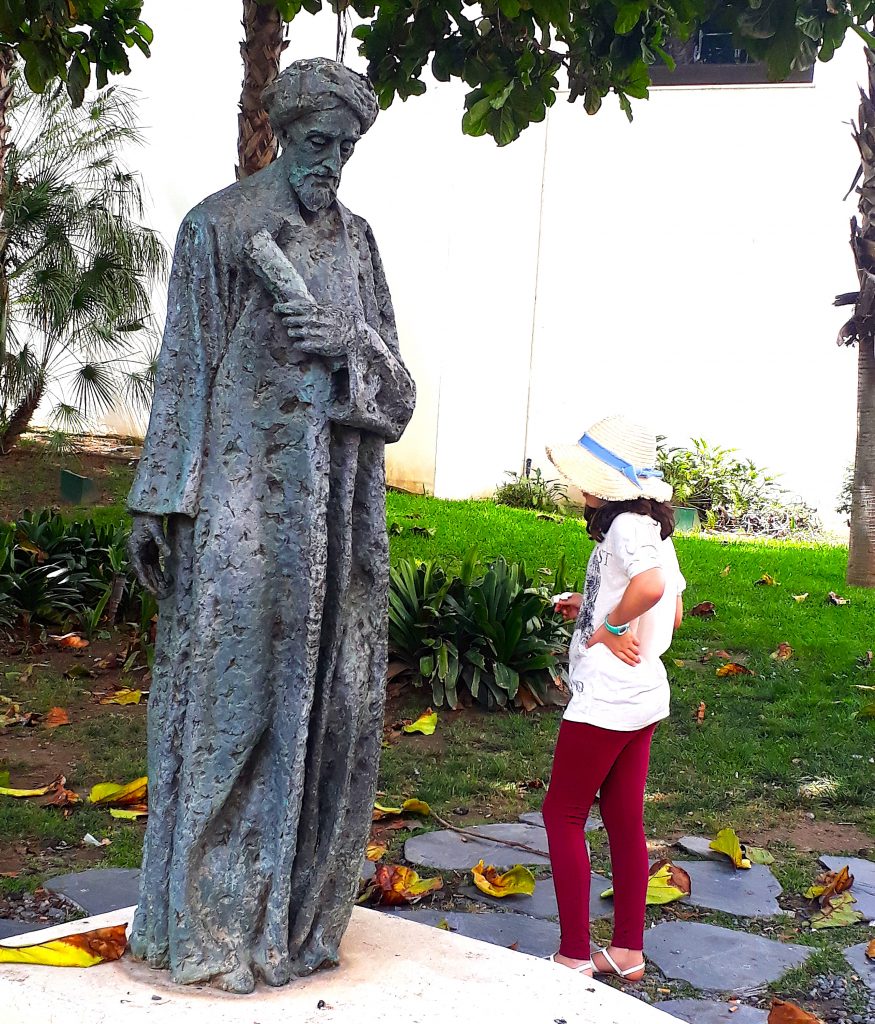
In the eleventh century Granada was the capital of Arab Spain. Samuel ha-Nagid, known as Nagid (993-1056), was the key figure in this period. This tradesman from Malaga quickly rose to become the vizier charged with conducting Granada’s policy and leading its Arab army, notably against Seville and Almería. Nagid was also a poet and learned rabbi and did much for the arts, especially poetry. The same was true of his son Yosef, who succeeded him at his death.
These poets give us an idea of the degree of development of the Jewish communities in the Islamic lands and of the way of life of courtiers there, divided between their love of pleasure, literature and the arts, and their traditional religion? They would later serve as a model for Jews in Castile and Aragón.
Salomon ibn Gabirol
The great poet Salomon ibn Gabirol (1022-54), the protégé of Nagid and his son, wrote the 400-line Kingdom’s Crown, a contemplative hymn to God and His creation, which Sephardic communities used as part of the liturgy for Yom Kippur. He also wrote The Source of Life, a philosophical work in Arabic examining the principles of Neoplatonism, which the Muslims were then reintroducing. He is also credited with Adon Olam, the prayer recited several times during daily services in the week and at the Shabbat by Jewish communities all over the world:
“Reigned the Universe’s Master,
Ere were earthly things begun;
When His mandate all created,
Ruler was the name he won.
And alone He’ll rule tremendous
When all things are past and gone,
He no equal has, nor consort,
He, the singular and lone,
Has no end and no beginnings;
His the scepter, might and throne.
He’s my God and living Savior,
Rock to Whom I in need run;
He’s my banner and my refuge,
Fount of weal when call’d upon.
In His hands I place my spirit,
At nightfall and at rise of sun,
And therewith my body also;
God’s my God -I fear no one”.
The New Encyclopedia of Judaism, Ed. Geoffrey Wisoder (New York: New York University Press, 2002).
However, with conflict with Arabic kingdoms and pressure from the Christians, especially after the reconquest of Toledo in 1080, the Spanish Arabs were driven to appeal to the Almoravids of North Africa for help. When the latter invaded southern Spain, the Jews only just avoided forced conversion. But the Almohads of Morocco, who invaded in 1146, were more intransigent: they prohibited the practice of Judaism, forcing Jews to either convert or hide their religion. Others chose exile in the neighbouring Christian lands. Apart from Granada, the last Moorish kingdom, Islamic Spain began at this time to lose its Jews.
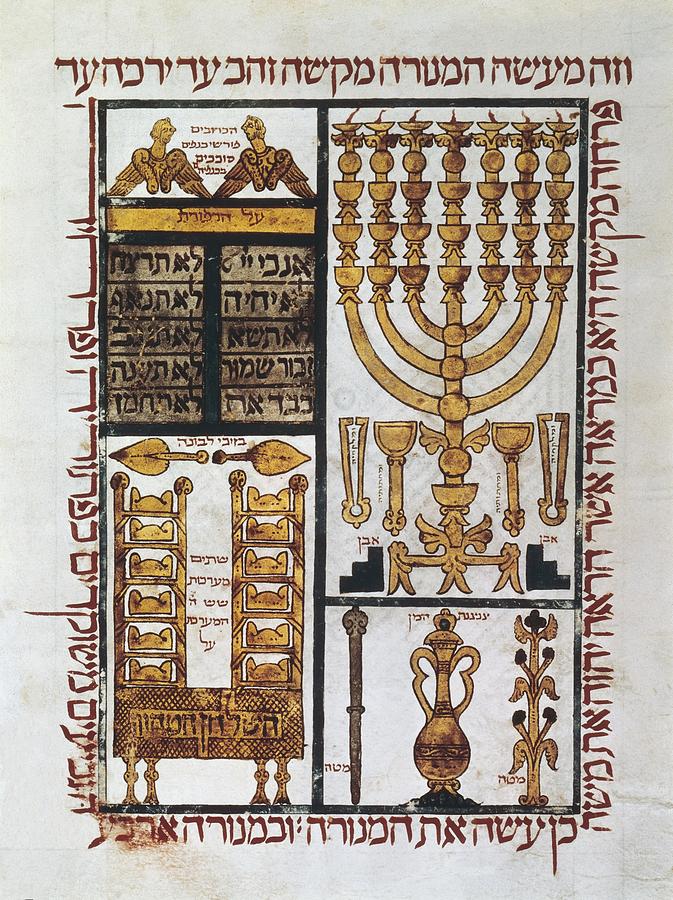
In all, Christian Spain took seven centuries to win back the Islamic territories. The recovery was completed with the capture of Granada in 1492, an event that deeply marked Jewish-Christian relations. In parallel to the victories won by the kingdoms of León, Navarre, Aragón, and Catalonia, the old Jewish communities of Catalonia and Aragón began to grow, and small groups settled along the road to Santiago de Compostela. The Jews colonised the reconquered territories and played an active part in trade and the textile industry.
In 1085 Alfonso VI took Toledo, establishing the new frontier between the Cross and the Crescent. The Jews were protected by the Christian monarchs, for they made useful administrators of the new territories as well as tax collectors and facilitated contacts in Arabic. The Jews grew wealthy. As the finance ministers of Castile and Aragón, it was they who advanced the tax revenues to the king.
By the twelfth century, all of Spain apart from Granada was Christian. A new golden age began for the Spanish Jews, but in the Christian lands now. This was especially true under Alfonso X (“the Wise”) in Castile and Jaime I in Aragón. Toledo became a new Jerusalem, the capital of Jewish life. It was home to scholars, Talmudists, chief rabbis, and financiers. Catalonia, too, had a period of splendour with Nahmanides at Gerona and Salomon ben Adret at Barcelona. The Jews kept out of political life and were no threat to relations between Christendom and Islam. In legal terms, they belonged to the king, a status that gave them protection but also put them at his mercy.
As elsewhere in Europe, the power of the church grew as the reconquest spread. Although the Fourth Lateran Council (1215) decreed a number and anti-Jewish measures, they were implemented with a certain flexibility for reasons of political necessity and in the interests if the struggle against the remaining Moorish kingdoms. Nonetheless, in Aragón, Jews were excluded from public service, and in Castile, the Cortes made numerous propositions to limit Jewish freedom.
The Black Death, the influence of anti-Jewish polemical literature, and the effect of Jewish participation in the civil war between Peter the Cruel and his bastard brother, Henry of Trastamare, all contributed to a rejection of Judaism.
This was compounded by a decline in faith and slackening of moral and religious practice among the better off. The Jewish-Christian dialogue entered a new phase, and the Christian world began to consider conversion as the solution to the presence of the Jewish minority. This is the time of the famous Barcelona Controversy (1256), when Nahmanides’s victory over the converted Jew Pablo Christiani was only partial. The ground had thus been prepared for the explosion of violence orchestrated by the archdeacon of Ecija, Ferran Martinez. The anti-Jewish campaign that he launched in 1378 intensified when he was made archbishop in 1390. Taking advantage of the death of Juan I on 4 June 1391, he fomented a riot culminating in the destruction of the judería in Seville. Many Jews were forced to convert to save their lives. The violence spread from one judería to another across Andalusia and Castile. The most flourishing Jewish quarters, in Toledo and Cordóba, were hit extremely hard. In July 1391 the wave reached Valencia, Majorca, Barcelona, and Gerona, wiping out Jewish life there.
These massacres greatly altered the Jewish community. A new figure appeared, the converso (convert). The conversos‘ motives and hopes were highly diverse. Those forced to convert continued to practice Judaism in secret; these were the crypto-Jews, or Marranos. Others used the opportunity to become full participants in Christian society and gain access to positions closed to Jews. Still others sincerely wished to become Christians, even if their baptism was forced upon them. The disputation at Tortosa in 1413-14, when Zerahia Halevi and Joseph Albo debated with the Christian convert Jeronimo de Santa Fé (José Halorqui) on the usual themes of Jewish-Christian polemic, was perhaps the last attempt to persuade the Jews by means of reason.
Christian society was uncertain as to what attitude it should take toward the Jews and conversos. The decision was made to separate the Jews and converts in order to ensure that the latter became good and sincere Christians and to prevent them from returning to Judaism. This was the mission entrusted to the Inquisition in 1480. Thomas Torquemada, who was appointed Grand Inquisitor, turned this into a redoubtably effective institution, relentlessly tracking down both “sympathisers” of Judaism and conversos, in Spain and Latin America, dragging them before tribunals, sentencing them to death in autos-da-fé, or condemning them in other ways.
After the conquest of Granada, Isabella of Castile and Fernando of Aragón signed the expulsion decree of 31 March 1492. This set out to resolve the thorny question posed by the Jewish presence by either conversion or exile.
The decree of expulsion
“Considering that every day it is manifest and patent that the aforesaid Jews continue to pursue their maleficent and pernicious objectives where they live and communicate with Christians, and so that in the future the faithful should be spared all opportunity to offend our holy faith, whom God has thus far kept from this sin, as should those who have committed it but have mended their ways and have come back to our Holy Mother Church: and this could easily happen because of the weakness of our human nature and the malignity of the power of the demon, who is constantly assailing us, unless we do away with the main cause of this peril, that is to say unless we banish the Jews from our kingdoms.”
In spite of pressure from Abraham Senior and Isaac Abravanel, two ministers of the Catholic monarchs, the Jews left their Spanish homeland on the ninth day of the month of Av, the date of the destruction of the Temple in Jerusalem. Abraham Senior agreed to convert while Isaac Abravanel joined others on the paths of exile to North Africa, the Ottoman Empire, Portugal, and elsewhere in Europe (Italy, France, England, the Netherlands). This was the Sephardic diaspora, which retained its customs and languages, Castilian and Catalan. The number who went into exile is hard to determine. Some 70,000 to 100,000 preferred exile to baptism -between a third and a half of Spain’s Jewish population at the time.
By the seventeenth century, they were no Jews left in Spain (except those in the tiny enclave on the African coast, where their interpreting skills were essentials to the survival of the garrison; they were not expelled until 1699). The Inquisition watched over the conversos with all its notorious severity.
Resistance
Some, like Isaac (Fernando) Cardoso, managed to escape the Inquisition. Born in Portugal in 1604, he was a doctor at the court of Philip IV. A respected intellectual, he knew all the great figures of the age, including Lope de Vega, and was treated by them as one of their own. The son of forced conversos, Cardoso lived ostensibly as a Christian and covertly as a Jew. In 1648, at the height of his fame, he suddenly left Spain and took refuge in Italy. There he publicly professed his Judaism in Venice and Verona and, under the name Isaac Cardoso, published one of the finest Jewish apologias, Las Excelencias de los hebreos.
The memory of Spain’s Jewish presence did not completely vanished, however. Count Duque Olivares had the idea of re-creating a Jewish community in Madrid in order to stimulate Spanish economic development. He must have known about the lucrative activity of the community in Amsterdam, which still spoke Spanish. However, he was forced to abandon his plans. In the eighteenth century, a few thinkers became aware of the losses occasioned by the departure of the Jews, arguing that they represented an important part of the Spanish heritage. Joseph Rodriguez de Castro, for example, published an essay on Spanish writers and rabbis from the eleventh century onward. King Charles VI also thought of bringing Dutch Jews to Spain and canceling the expulsion edict. But the Inquisition remained vigilant. The Holy Office was not abolished until 1813, during the War of Independence and the Liberal movement at the Cortes in Cadiz. Although reestablished during the Restoration, it was abrogated for good in 1834.
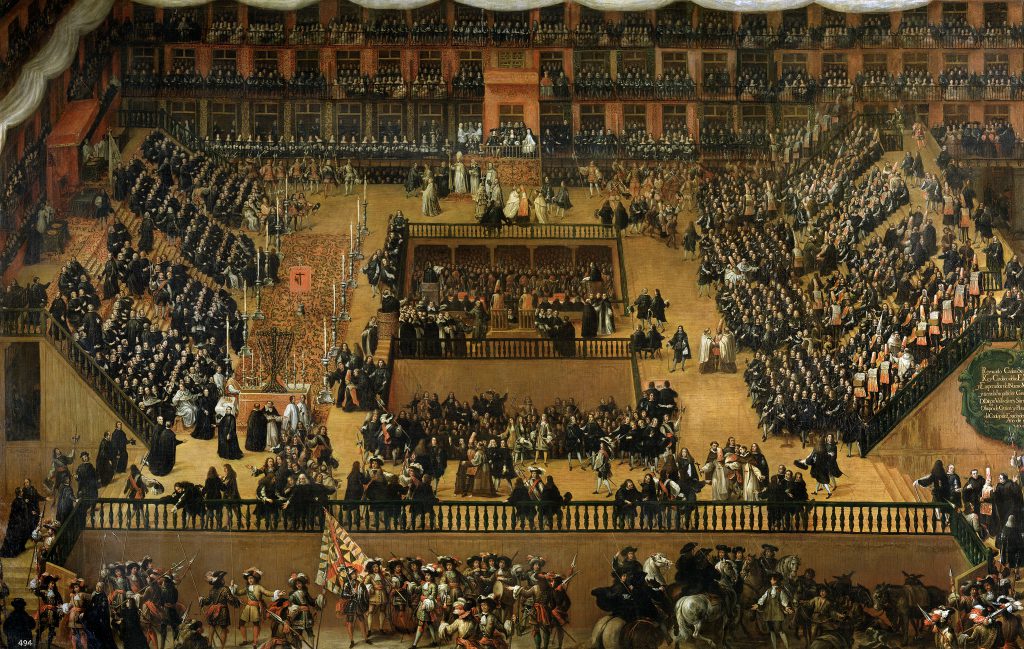
In the nineteenth century Jewish merchants came to northern Spain for the textile trade. They were of Spanish and Portuguese origin but had French nationality and were based in Bordeaux or Bayonne. These were isolated cases, however, and never led to the creation of organised communities. This century was also marked by war in Africa and the occupation of Tétouan between 1859 and 1862. In 1858 Ceuta, one of the Spanish enclaves in Morocco, was attacked by Moroccan Montagnards. Spain demanded reparation from the sultan, which was slow in coming. Queen Isabella then sent an expedition commanded by Prim and O’Donnell. The Spanish troops occupied Tétouan, where they were met by a population speaking a mixture of Arabic and Hebrew.
These were the descendants of the Jews expelled in 1492, who had almost miraculously kept going in that little town ever since. Until 1862, the occupation allowed the Jewish population to participate in the management of the town and to rise in society. It is appropriate to consider this a reunion of Spain and its Jews, for the event was made known to the general public by the newspapers and numerous accounts given by officers, and historians and philologists were fascinated to discover their language as it had been spoken four centuries earlier.
A visit by King Alfonso XIII to Seville in 1904 highlighted the existence of a small Jewish community there, most from North Africa. They welcomed the king to their street (Calle de la Feria) with a banner in Hebrew and Spanish. In the early 1900’s, Doctor Angel Pulido (1852-1932) who, when traveling along the Danube came across eastern European Jews speaking an archaic Spanish, launched several press campaigns and petitions to persuade Spain to recognise the communities in Serbia, Bulgaria, Romania, and Turkey, whose customs were still close to those of the Sepharad. He published two important works on the recent history of the Spanish Jews: Los Israelitas Españoles y el idioma castellano (1904) and Españoles sin patria, y la raza sefardi (1905). Pulido obtained authorisation to open a synagogue in Madrid (1917) for about 150 families and one in Barcelona (1914) for 250 people. He also created the Hispano-Hebrea Association in 1910 and in 1913 invited Professor Abraham Shalom Yehuda to teach Hebrew at the University in Madrid.
In 1914, the Zionist leader Max Nordau was forced to leave France because of his Austrian nationality. He came to Spain. King Alfonso XIII personally interceded with the kaiser to moderate the persecution and violence against the Jews in Palestine. After World War I, this process of rapprochement with the Jews gained momentum as major political figures such as the count of Romanones, Melquiades Alvarez, Alejandro Lerroux, Juan de la Cierva, Niceto Alcalà Zamora, and several army generals publicly supported this effort of recognition.
After the 1923 Treaty of Lausanne had created a legal void around certain protected Jews by putting an end to the system of capitulations in the Ottoman Empire, the Spanish government under General Primo de Rivera published the decree of 24 December 1924, which granted Spanish nationality to Sephardim who met certain conditions. Although this decree was little used during the six-year period of its validity, it would prove highly useful during World War II.
Under the Second Republic (1931-36), whose constitution guaranteed religious liberty and affirmed the secular character of the state, Spain aroused considerable interest among Jews in Europe and the Orient, who saw this guarantees as tantamount to an abrogation of the expulsion decree. In 1935, the lavish celebrations in Córdoba for the 800th anniversary of the birth of the doctor and philosopher Maimonides were like a public demonstration of Spain’s renewed interest in its Jewish past.
During the civil war, the communities of Seville and Ceuta and Tétouan in Morocco had to pay heavy taxes to support the nationalist troops of General Franco. Nazi influence revived anti-Semitic propaganda. Some 7,000 to 10,000 Jews from Europe, America, and Palestine came to fight in the international brigades, and even produced their own little Yiddish newsletter. At the end of the war, the victory of Franco’s troops was followed by the closing of the synagogues in Madrid and Barcelona. Marriages and circumcisions were prohibited and Jewish cemeteries were closed. Jewish children were compelled to attend Catholic school.
During World War II, neutral Spain became the only refuge in southern Europe from the lightning advance of the Nazi troops. Initially, transit visas were fairly easy to obtain. After the armistice of 1940, however, Spain and France took measures to regulate requests, especially through the Spanish consulate in Marseille. After July 1942, it was illegal for Jews to leave France, and so the crossings were made in secret, albeit with a degree of Spanish sympathy. Nevertheless, there were arrests, and a camp was established at Miranda de Ebro, where prisoners received psychological and material help from American Jewish organisations based in Madrid. These prisoners were gradually evacuated, most of them to Lisbon and the United States.
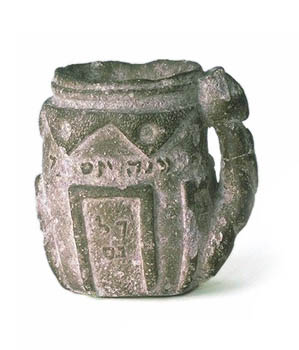
Spain still had to deal with the problem of the Jews in eastern Europe (Romania, Greece, Bulgaria, and Hungary) and France who were of Spanish origin or who, by virtue of the decree of 1924, has Spanish nationality. Jews in these areas called on Spain to help and protect them when their own governments abandoned them to the Nazis. Thanks to the actions of several Spanish ambassadors and consuls who knew about the faith of the deportees and put pressure on their minister in Madrid, notably Sebastian Romero, Julio Palencia, Romera Radigales, Bernardo Rolland, and Angel Briz, individual visas were issued, allowing several thousand people to escape. In some cases, in France and Greece, the property of these Spanish Jews was protected by the consular authorities and then returned after the war.
Although not favorable to the Jews, the policy of Franco and his ministers was not anti-Semitic. For Franco’s authorities, the Sephardic Jews were living testimony to a glittering period of their country’s history. Still, given Spain’s position of pro-German neutrality, political prudence and consideration of the balance of power between the Allies and the Axis were vital.
In 1941, the government paradoxically decided to set up the Instituto Arias Montano, which, with its journal Sefarad, became one of the most renowned centres for the study of Spanish Judaism and its diaspora. In 1949 a small synagogue opened discreetly in a Madrid apartment. The same happened in Barcelona in 1952. Although Catholicism was now the state religion, these small communities were tolerated. In 1967 a synagogue was built in Madrid, the first one since 1492. In 1978, Spain’s new constitution guaranteed religious freedom to all citizens. Today there are some 12,000 Jews in Spain, with communities established in Madrid, Barcelona, Valencia, Seville, Malaga, and the Moroccan enclaves of Ceuta and Melilla.